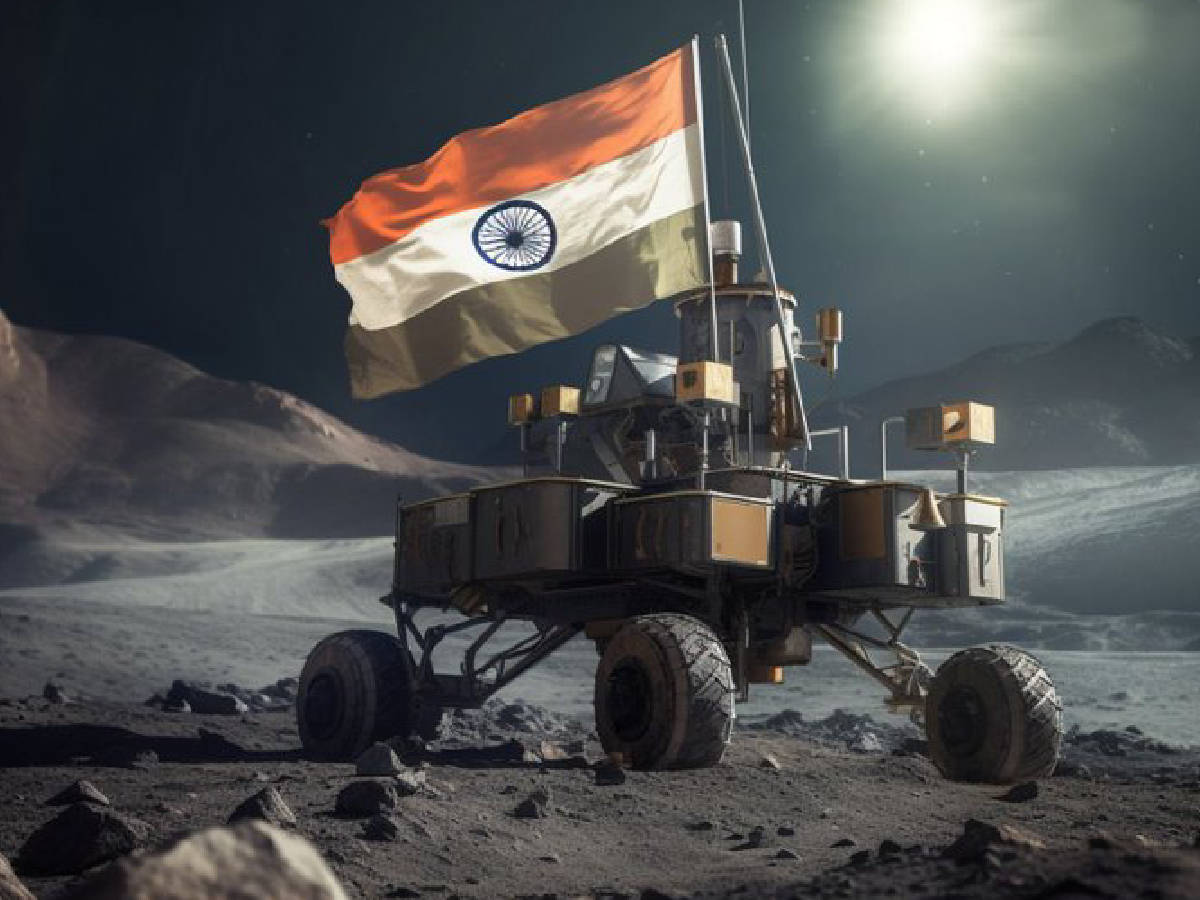
Yes, India is the first country to land on the South Pole side of the Moon on August 23 and has scripted space history. Even as the nation is ‘Over the Moon’ with the success and euphoria generated, the question uppermost is, what next?
The Indian Space scientists have a window of just 14 clear days of light to carry out all the intended experiments, capture imagery and make the best of the unique opportunity it has created for itself. For this, Pragyan, the Rover has been released from the belly of Vikram, the Lander, a few hours after the soft landing.
It is to the credit of the Indian Space Research Organisation (ISRO), that 15 years ago, Chandrayaan-1(2008), the first mission to the moon, was instrumental in discovering the presence of water ice on the Moon. In a way, that discovery rekindled interest in the US, Russia and fast tracked China’s interest in the Moon.
It may be noted that both the US and Russia after an intense space race during the 1960s and 1970s, that saw many landings of the Apollo Mission, including American cosmonauts, starting with Neil Armstrong in 1969 and the Luna missions of the erstwhile Soviet Union. Incidentally, the Russian’s comeback mission to the South Pole of the Moon via Luna-25 ended in a disaster on August 20. On the other hand, the multi-billion dollar, Artemis Project of the US, with an objective of sending astronauts to the Moon is making good progress.
Therefore, the entire space sector in the world will be keenly observing the progress of the Chandrayaan-3 mission in the coming two weeks. The mission stands on the verge of establishing the possible presence of more water sources, minerals and even something hitherto unknown.
Space scientists predict that the data and insights that the ISRO can scoop up from its experiments will be crucial in helping future lunar missions. The lunar South Pole is also set to be the landing site for the United States’ Artemis mission. The NASA has tied up with Blue Origin, the space company of Billionaire, Jeff Bezos for setting up a lunar station too in the near future.
According to S Somnath, the Chairman of the ISRO “Chandrayaan-3 is powered by solar panels and is designed to last a single lunar day, equivalent to 14 Earth days. Within this time frame, it is slated to carry out a series of experiments, including a spectrometer analysis of the lunar surface’s mineral composition. The chances of the Vikram Lander and Pragyan Rover surviving the Lunar night (which is 14 earth days) are difficult.
The success of the Chandrayaan-3 mission will also boost the role of the ISRO in the Artemis Project. The two countries had signed an accord during the recent visit of the Indian Prime Minister, Narendra Modi to the US to address the joint session of the US Congress. The ISRO and NASA have strengthened the collaborations in recent years.
The upcoming joint project called NISAR (NASA-ISRO Synthetic Aperture Radar), which has capability to scan the earth and generate imagery that will help in combating natural disasters, climate data etc is in advanced stage of assembly and deployment. It is expected to be launched in early 2024.
The ISRO Chairman also indicated that preparatory work on sending astronauts to the Moon is a possibility in the future. The Gaganyaan project, which envisages sending Indians into space, will be a precursor. The first flight is expected in September 2024. After a few more tests, the flight will be decided in 2025. The potential candidates for the flight have already undergone preliminary training in Russia, he said.
According to industry analysts, the ISRO will gain lot of expertise that it can share and help in the collaborative projects like the Lunar Polar Exploration Mission (LUPEX), and the joint initiatives with the Japan Aerospace Exploration Agency (JAXA), to explore the South Pole region of the moon.
Interestingly, the Japan’s space Agency-JAXA is all set to launch the SLIM (Smart Lander for Investigating Moon), also called the ‘Moon Sniper’ on August 26. The SLIM aims to land on a difficult region of the moon with limited resources–small size and lower weight. Designed to a weight of 590 kgs, the lander will shed weight to just 210 kgs at landing. The main objective of the maiden mission for JAXA is to explore potential landing possibilities on the moon’s surface. The spacecraft consists of a landing radar for navigation/obstacle detection and a multi band camera and laser retroreflector array which can conduct specific tasks for safe landing.
For India and ISRO, the success of Chandrayaan-3 represents not just the accomplishment of a complex mission with tough technological and scientific challenges but also a confident entry into the top spacefaring nations, which are betting big on outer space and planetary launches, especially to Mars. Capability to launch heavier payloads (satellites), space missions etc will also give the ISRO a competitive edge in the lucrative launch vehicle market and future space tourism with its cost effectiveness against companies like Space X, Blue Origin, Virgin Galactic, Lockheed Martin etc.



